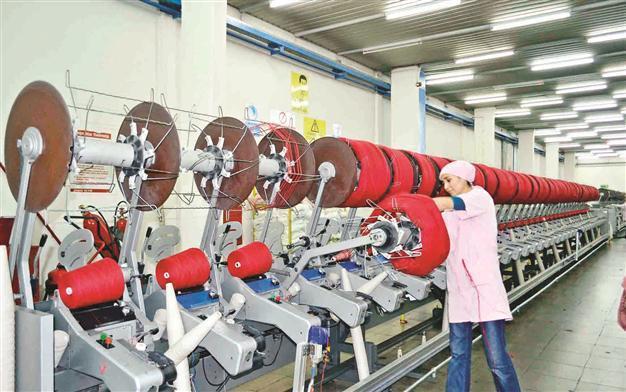Bright performance in exports closes trade gap
ISTANBUL-Hürriyet Daily News

Turkey’s strong export performance is helping close its trade gap, while the share of exports to the European Union in overall foreign sales continues to decline. AA photo
Turkey’s foreign trade deficit declined by an annual 20 percent in February, strengthening the Central Bank’s hand in the aim to cool down economic growth in a gradual way. The monthly deficit stood at $5.94 billion, while the gap in the January-February period declined by 12.6 percent to just below $13 billion.Turkey’s exports rose by an annual 17.1 percent in February, reaching $11.78 billion. Imports, on the other hand, rose by only 1.1 percent to $17.7 billion. The bright export performance owed much to the surge in precious stone and energy exports, according to Reuters.
The twelve-month rolling foreign trade gap retreated to $104 billion, from $105.5 billion the previous month. Stripped of seasonal effects, February exports rose by 6.7 percent, while imports posted a meager rise of 0.2 percent.
The European Union’s share in Turkey’s exports declined to 41.9 percent in February, from 48.9 percent in February 2011. Exports to Germany in the month were at $1.08 billion, followed by Iraq ($800 million), the United Kingdom ($795 million), the United States ($533 million) and France ($533 million).
Imports from Russia stood at $1.84 billion, while imports from China were at $1.73 billion.
Data from the Turkish Statistics Institute show that Turkey’s energy imports, the soft underbelly of its huge current account gap, rose to $9.3 billion in the January-February period, compared to $7.5 billion in the same period last year.
Every permanent $10 increase in the price of oil per barrel brings an extra cost to Turkey’s energy import bill by $4 billion, according to calculations. The Turkish Central Bank’s 2012 average oil price stands at $110 per barrel. As of Friday, Brent crude was trading at over $123 per barrel in the international markets.
Crucial coverage ratio rising
On a bright note, the export-import coverage ratio in February reached 66.5 percent, the highest level in the last 21 months. Imports of consumption goods posted an annual decline of 17 percent. Imports of intermediate goods registered a 4 percent rise. Imports of investment goods recorded a 5 percent annual increase.
“Presumably, exports were helped by the weaker currency, and on the import side there is some evidence of a ‘stop’ in economic activity at the turn of the year,” said Timothy Ash, an emerging markets economist at the Royal Bank of Scotland. However, according to Ash, the economy has “pulled back” since then, which might suggest that the eventual improvement on the current account deficit will moderate. “Vulnerability to the oil/energy price channel remains,” Ash said.
Özgür Altuğ, chief economist at BGC Partners, noted that the rise in exports was much higher than what preliminary data had suggested.
“The last four months’ data (except January) confirmed that the deterioration in foreign trade balance was finally over,” Altuğ said. “We continue to foresee that in the absence of a severe recession the improvement in external balances will be gradual.”
Altuğ pointed toward the sharp and surprising increase in precious metal and energy exports. The former rose by an annual 176 percent, while the latter surged by 67.3 percent.
“Rising exports to Africa contributed positively to overall export performance,” he said, predicting that monthly current account deficit in February will be around $4.5 billion. Such a figure would bring the 12-month rolling current account gap from $77.1 billion to around $75.6 billion
















